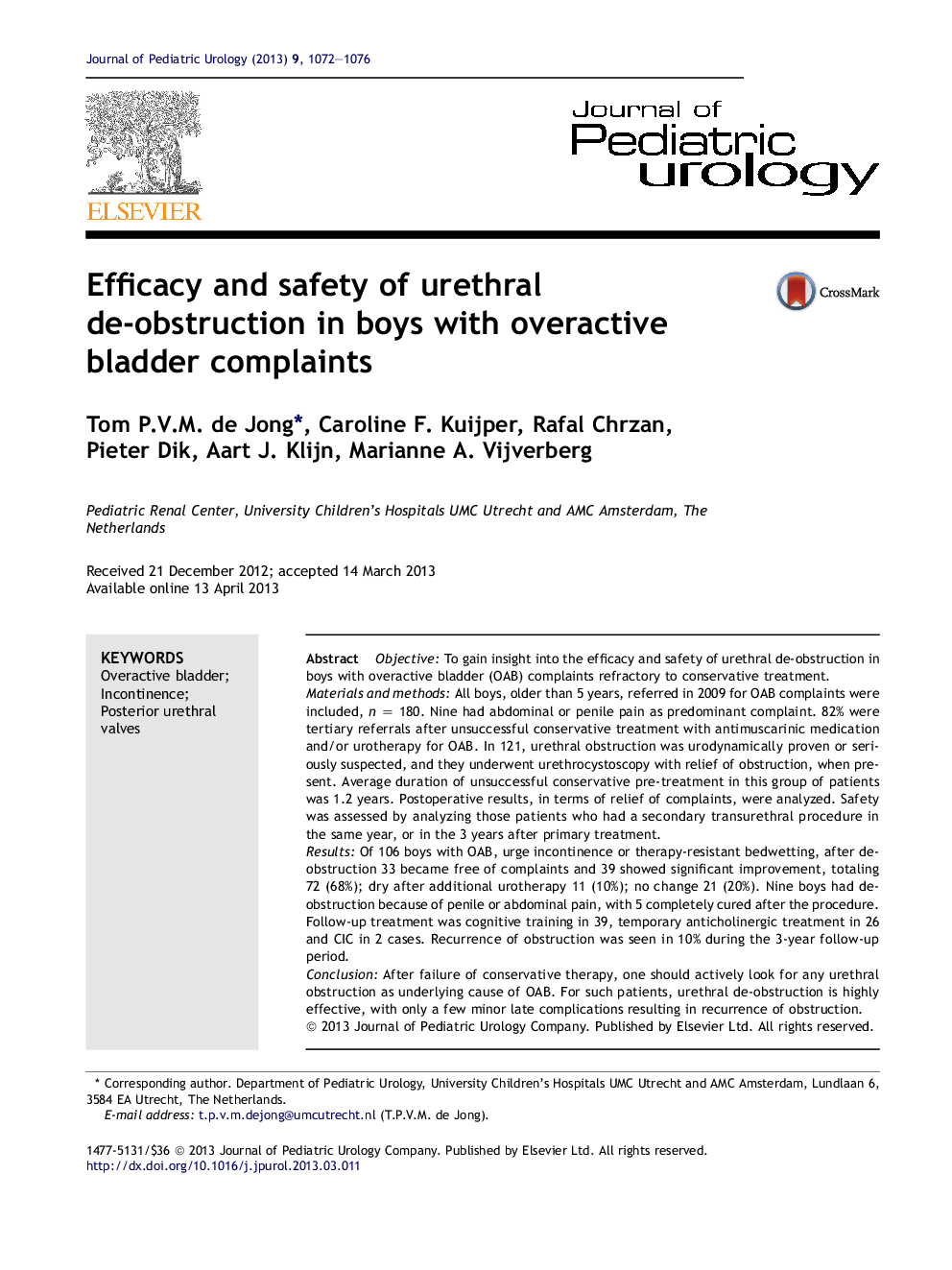| Article ID | Journal | Published Year | Pages | File Type |
|---|---|---|---|---|
| 4162405 | Journal of Pediatric Urology | 2013 | 5 Pages |
ObjectiveTo gain insight into the efficacy and safety of urethral de-obstruction in boys with overactive bladder (OAB) complaints refractory to conservative treatment.Materials and methodsAll boys, older than 5 years, referred in 2009 for OAB complaints were included, n = 180. Nine had abdominal or penile pain as predominant complaint. 82% were tertiary referrals after unsuccessful conservative treatment with antimuscarinic medication and/or urotherapy for OAB. In 121, urethral obstruction was urodynamically proven or seriously suspected, and they underwent urethrocystoscopy with relief of obstruction, when present. Average duration of unsuccessful conservative pre-treatment in this group of patients was 1.2 years. Postoperative results, in terms of relief of complaints, were analyzed. Safety was assessed by analyzing those patients who had a secondary transurethral procedure in the same year, or in the 3 years after primary treatment.ResultsOf 106 boys with OAB, urge incontinence or therapy-resistant bedwetting, after de-obstruction 33 became free of complaints and 39 showed significant improvement, totaling 72 (68%); dry after additional urotherapy 11 (10%); no change 21 (20%). Nine boys had de-obstruction because of penile or abdominal pain, with 5 completely cured after the procedure. Follow-up treatment was cognitive training in 39, temporary anticholinergic treatment in 26 and CIC in 2 cases. Recurrence of obstruction was seen in 10% during the 3-year follow-up period.ConclusionAfter failure of conservative therapy, one should actively look for any urethral obstruction as underlying cause of OAB. For such patients, urethral de-obstruction is highly effective, with only a few minor late complications resulting in recurrence of obstruction.
